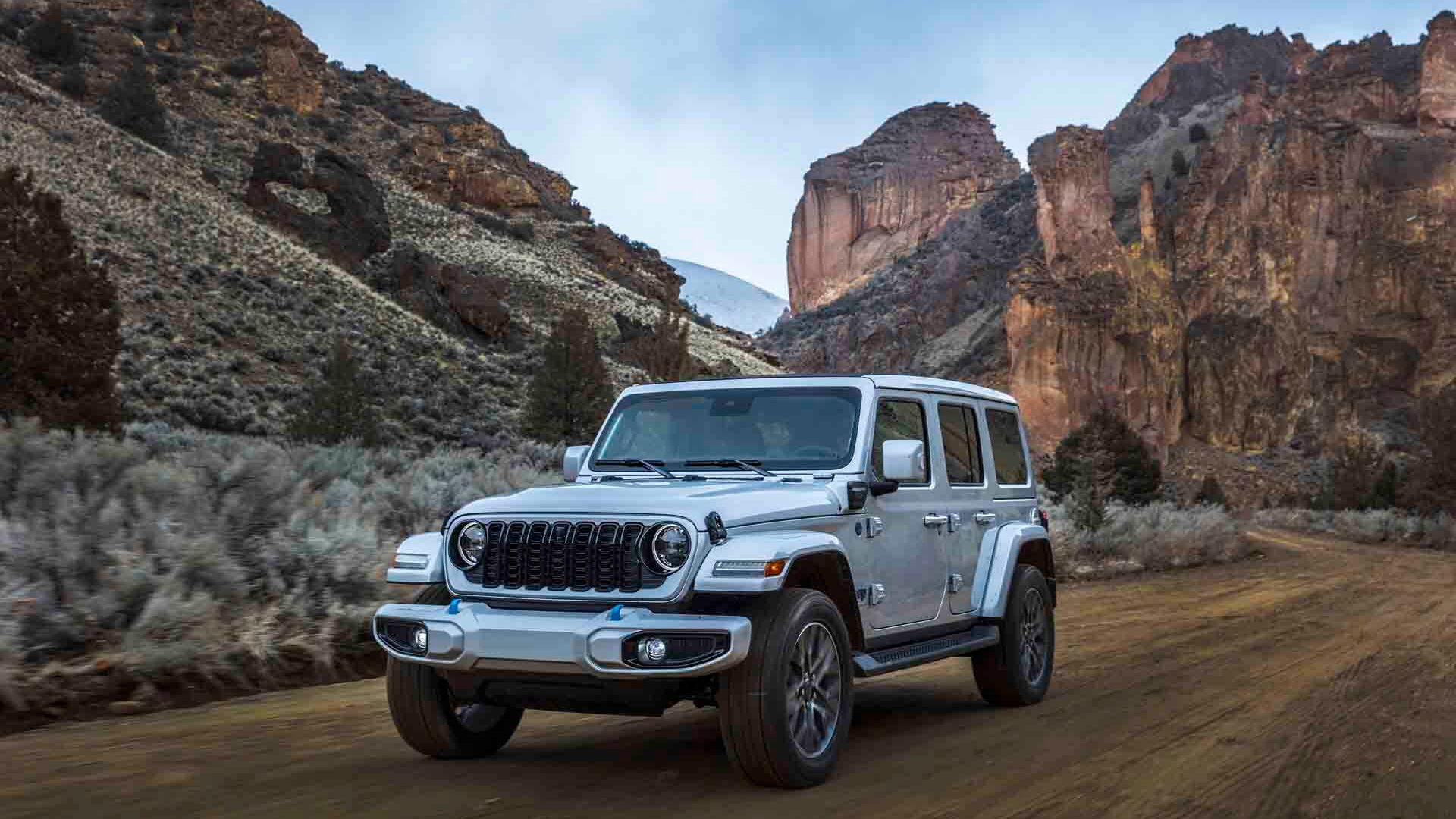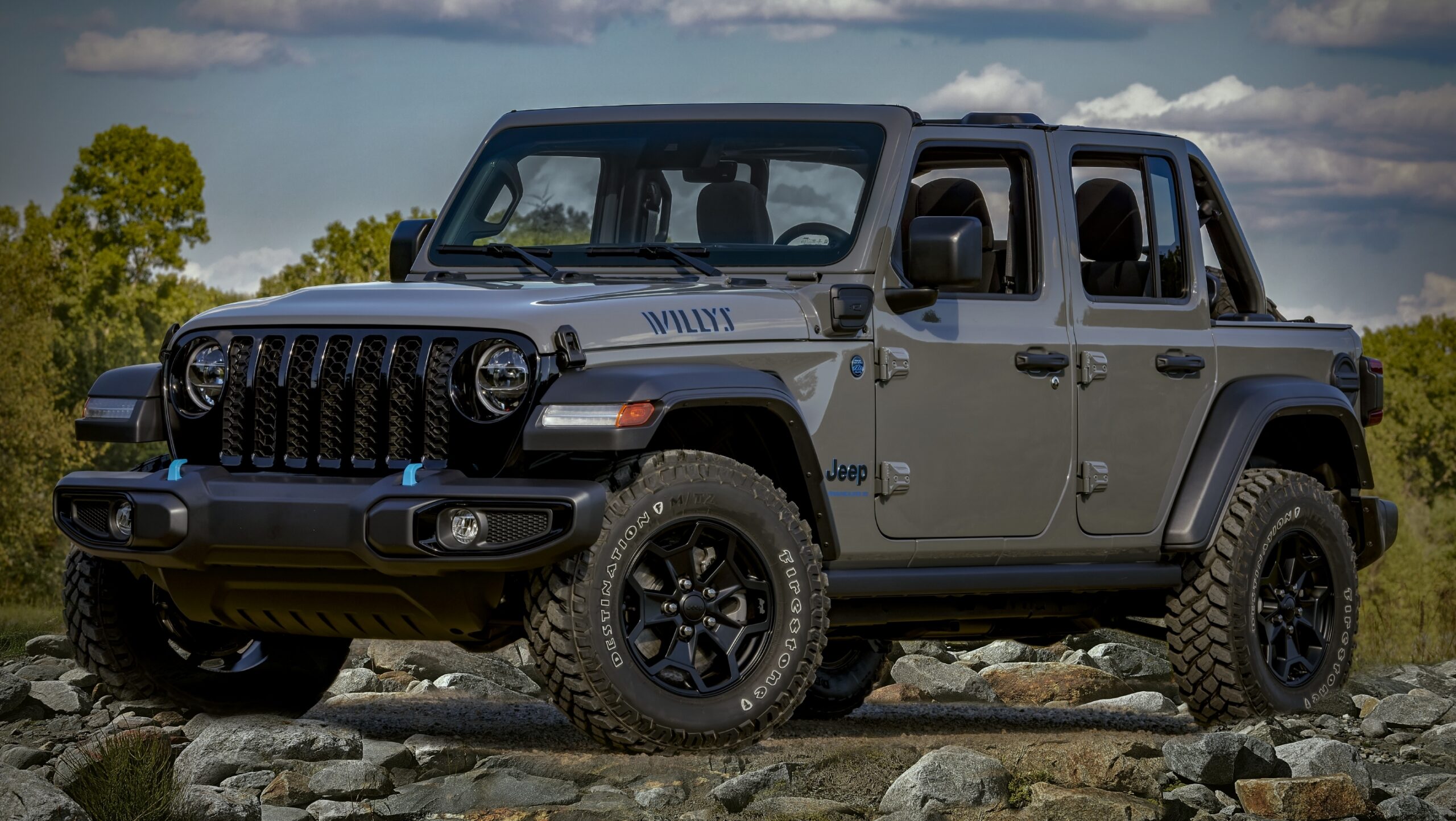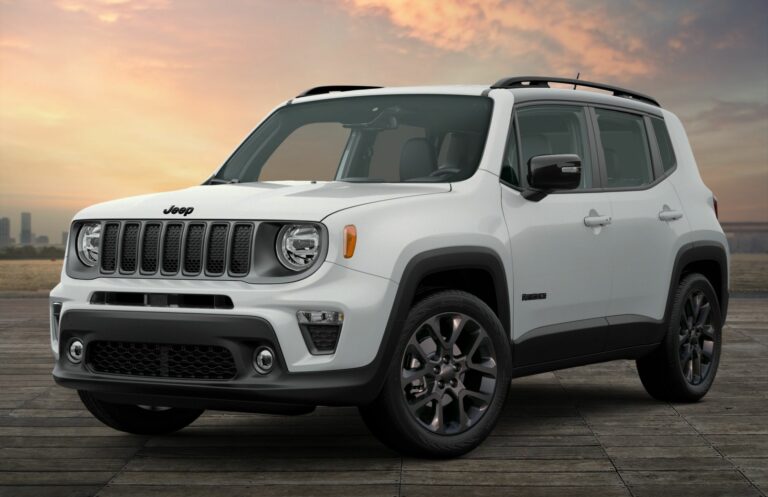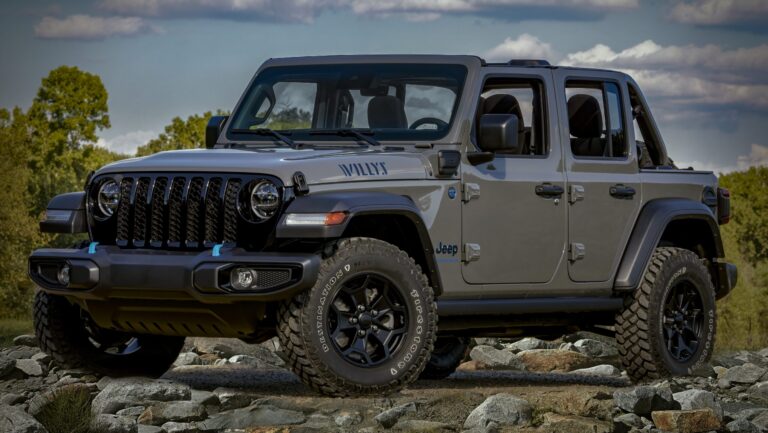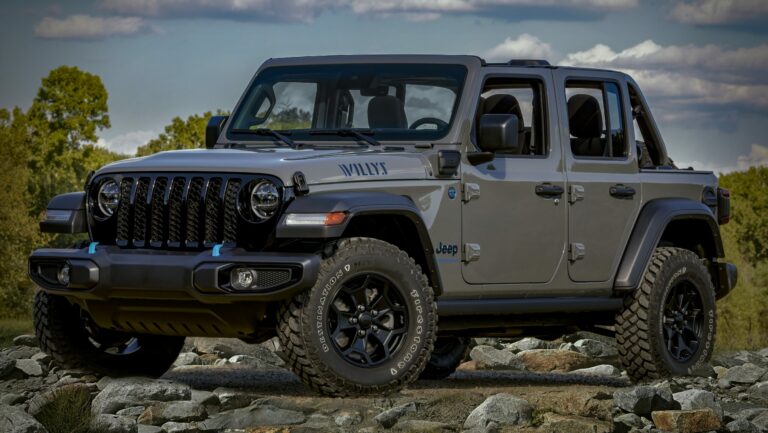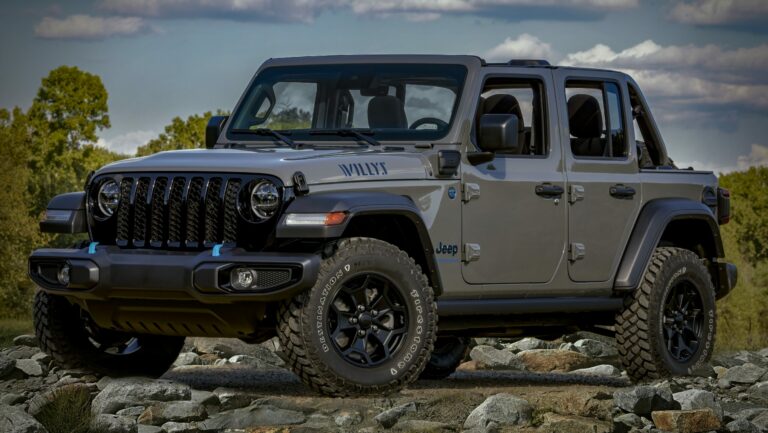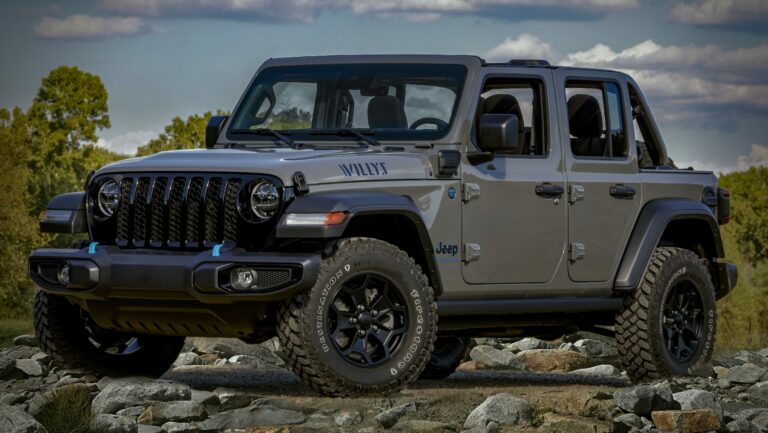Jeep Grand Cherokee SRT: Unleashing Raw Horsepower and Torque
Jeep Grand Cherokee SRT: Unleashing Raw Horsepower and Torque jeeps.truckstrend.com
The automotive world is replete with vehicles designed for specific purposes: efficient commuters, rugged off-roaders, luxurious cruisers, and blistering sports cars. Then there’s the Jeep Grand Cherokee SRT – a vehicle that boldly defies easy categorization. It’s an SUV that offers the practicality of space and utility, yet possesses the heart of a muscle car, capable of delivering exhilarating performance that belies its family-friendly silhouette. At the core of this incredible duality lies its defining characteristics: immense horsepower (HP) and prodigious torque.
Understanding the Jeep Grand Cherokee SRT’s HP and Torque figures isn’t just about reciting numbers; it’s about comprehending the very essence of its performance, its capability to pin you back in your seat, and its surprising prowess on the track or the drag strip. These metrics are the bedrock of its "Street and Racing Technology" (SRT) designation, signifying a meticulous engineering effort to transform a capable SUV into a high-performance titan. For enthusiasts, prospective owners, and anyone curious about the pinnacle of SUV performance, delving into the specifics of the SRT’s power output is crucial to appreciating its unique position in the automotive landscape.
Jeep Grand Cherokee SRT: Unleashing Raw Horsepower and Torque
Understanding the Power Equation: Horsepower vs. Torque in the SRT
Before we dive into the specific figures for the Grand Cherokee SRT, it’s important to clarify the roles of horsepower and torque, as they are often discussed together but represent distinct aspects of an engine’s output.
Horsepower (HP): The Measure of Speed and Top End Performance
Horsepower, originally defined by James Watt, is a unit of power that measures the rate at which work is done. In automotive terms, it dictates how quickly an engine can perform work, directly correlating to a vehicle’s top speed potential and its ability to maintain speed at higher RPMs. For the Grand Cherokee SRT, high horsepower means it can accelerate rapidly and achieve impressive top speeds for an SUV of its size. It’s what gives the SRT its "sprint" capability.
Torque (lb-ft): The Measure of Raw Pulling Power and Acceleration
Torque, measured in pound-feet (lb-ft), is the rotational force an engine produces. It’s the twisting power that gets a vehicle moving from a standstill and determines its low-end grunt and ability to accelerate quickly from lower speeds. High torque is vital for strong off-the-line acceleration, towing heavy loads, and conquering inclines without losing momentum. In the Grand Cherokee SRT, the substantial torque output is what delivers that immediate, visceral push when you hit the accelerator, making it feel incredibly responsive despite its weight.
The Synergy: While horsepower is about how fast you can go, torque is about how fast you get there. For a performance SUV like the Grand Cherokee SRT, both are critically important. High horsepower ensures it can reach impressive speeds, while immense torque provides the instantaneous acceleration and pulling power that defines its thrilling driving experience and practical utility. The engineers at SRT masterfully tuned the HEMI engine to deliver a robust balance of both, ensuring the Grand Cherokee SRT is not just fast, but also incredibly responsive and capable.
The Heart of the Beast: Engine Specifications Across Generations
![]()
The Jeep Grand Cherokee SRT’s performance lineage is primarily defined by its powerful naturally aspirated HEMI V8 engines. While the SRT badge graced a few generations, the most prominent and high-performance iterations have been powered by the iconic 6.4-liter (392 cubic inch) HEMI.
WK1 Generation (2006-2010 Grand Cherokee SRT8):
The first iteration of the Grand Cherokee SRT, known as the SRT8, debuted in 2006. It was powered by a 6.1-liter (370 cubic inch) HEMI V8 engine.
- Horsepower: 420 hp
- Torque: 420 lb-ft
This generation set the stage, proving that an SUV could indeed be a formidable performance machine, capable of sprinting from 0-60 mph in under 5 seconds.

WK2 Generation (2012-2021 Grand Cherokee SRT):
This is the generation most people associate with the modern Grand Cherokee SRT. It received a significant upgrade in engine displacement and power output, housing the larger and more potent 6.4-liter (392 cubic inch) naturally aspirated HEMI V8.
- Early WK2 (2012-2014):
- Horsepower: 470 hp
- Torque: 465 lb-ft
- Later WK2 (2015-2021):
- Horsepower: 475 hp
- Torque: 470 lb-ft
The slight bump in power from 2015 onwards came from minor engine calibration tweaks. This generation consistently delivered 0-60 mph times in the mid-4-second range, pushing the boundaries of what an SUV could achieve. It was paired with a sophisticated 8-speed automatic transmission and a Quadra-Trac active on-demand four-wheel-drive system, ensuring optimal power delivery to all four wheels for maximum traction and acceleration.
The Trackhawk Distinction (Briefly):
It’s important to note that while the SRT is incredibly powerful, Jeep later introduced the Grand Cherokee Trackhawk (starting in 2018), which took performance to an even more extreme level with a supercharged 6.2-liter HEMI V8 (the Hellcat engine), producing 707 hp and 645 lb-ft of torque. While often compared, the SRT remains a distinct, highly capable, and slightly more accessible high-performance SUV in its own right, relying on natural aspiration for its immense power.
Performance Metrics: What HP and Torque Mean in Reality
The impressive horsepower and torque figures of the Grand Cherokee SRT translate directly into real-world performance that is truly astonishing for its class.
- Blistering Acceleration: With 475 horsepower and 470 lb-ft of torque, the WK2 Grand Cherokee SRT consistently achieves 0-60 mph times in the mid-4-second range (typically 4.4-4.6 seconds). This puts it in the league of many dedicated sports cars, a remarkable feat for a vehicle weighing over 5,000 pounds.
- Quarter-Mile Prowess: The SRT can complete the quarter-mile sprint in the high 12-second range, often at speeds exceeding 105 mph. This illustrates its sustained power delivery and ability to pull hard through the gears.
- High Top Speed: While not designed for autobahn cruising, the SRT boasts a top speed of around 160 mph, a testament to its aerodynamic design and powerful engine’s ability to overcome air resistance.
- Towing Capability: The generous torque output also makes the SRT a surprisingly capable tow vehicle, with a towing capacity of up to 7,200 pounds. This highlights the practical utility that blends seamlessly with its performance aspirations – you can haul a boat or a small trailer while still having enough power to outrun many sports sedans.
- Dynamic Driving Experience: Beyond raw numbers, the HP and Torque contribute to the SRT’s engaging driving dynamics. The immediate throttle response, the ferocious roar of the HEMI engine, and the firm yet compliant suspension work in harmony to deliver a driving experience that is both thrilling and surprisingly refined for an SUV of its caliber. Different drive modes (Auto, Sport, Track, Snow, Tow) adjust throttle response, transmission shift points, suspension stiffness, and all-wheel-drive bias to optimize the delivery of this power for various driving conditions.
Maintaining and Optimizing HP and Torque
To ensure your Grand Cherokee SRT consistently delivers its peak horsepower and torque, and to preserve its longevity, proper maintenance and a few considerations are key.
- Regular Scheduled Maintenance: Adhere strictly to the manufacturer’s recommended service intervals. This includes timely oil changes with the correct synthetic oil (essential for high-performance engines), spark plug replacements, air filter checks, and fluid flushes. A healthy engine is a powerful engine.
- Fuel Quality: The 6.4L HEMI V8 is designed for premium unleaded gasoline (91 octane or higher). Using lower octane fuel can lead to pre-detonation (knocking), which the engine’s computer will compensate for by retarding timing, resulting in a noticeable reduction in HP and Torque.
- Tire Management: The SRT’s power and weight put significant stress on its tires. Regular rotation and alignment are crucial for even wear. Investing in high-performance tires designed for the vehicle’s capabilities will maximize grip and translate power more effectively to the road.
- Brake System Care: Given its performance capabilities, the SRT is equipped with powerful Brembo brakes. Monitor brake pad wear and rotor condition, and ensure brake fluid is replaced as recommended.
- Aftermarket Modifications (Proceed with Caution): For those seeking even more power, aftermarket modifications like cold air intakes, exhaust systems, and engine tunes are available. While these can potentially increase HP and Torque, it’s vital to choose reputable brands and professional installers. Be aware that significant modifications can void your warranty and may impact long-term reliability if not done correctly. Always prioritize engine health and safety over extreme power gains.
Challenges and Considerations of High Performance
Owning a vehicle with the power of a Grand Cherokee SRT comes with certain responsibilities and considerations:
- Fuel Economy: The price of performance is often paid at the pump. The 6.4L HEMI is a thirsty engine, and combined with the SRT’s weight, fuel economy is not its strong suit. Expect single-digit city MPG and low teens on the highway.
- Operating Costs: Beyond fuel, tires and brakes will wear faster due to the vehicle’s performance capabilities and weight. Insurance premiums can also be higher for a high-performance SUV.
- Managing the Power: The SRT’s immense power requires respect. It’s crucial for drivers to be experienced and responsible, especially when exploring its limits. Driver training for high-performance vehicles can be highly beneficial.
- Traction Management: While the all-wheel-drive system is excellent, sudden, heavy throttle inputs, especially in adverse conditions, can still challenge traction.
Practical Advice and Actionable Insights
For those considering or currently owning a Jeep Grand Cherokee SRT:
- Understand the Commitment: Be prepared for the higher running costs associated with a high-performance vehicle. It’s an investment in exhilarating driving, but it requires more financial upkeep than a standard SUV.
- Prioritize Maintenance: Do not skimp on scheduled maintenance. It’s the best way to protect your investment and ensure the vehicle performs as intended for years to come.
- Drive Responsibly: The power is intoxicating, but use it wisely. Public roads are not race tracks. Enroll in advanced driving courses to truly understand how to handle such power safely and effectively.
- Quality Parts Matter: When replacing components, especially tires and brakes, opt for quality parts designed to handle the SRT’s demands.
- Consider Your Needs: If extreme power is your sole focus, the Trackhawk might be a consideration. However, the SRT offers a fantastic balance of raw power, everyday usability, and relative affordability compared to its supercharged sibling, making it a compelling choice for many.
Jeep Grand Cherokee SRT: Specifications and Pricing Overview
Below is a table summarizing the key specifications and approximate pricing for the Jeep Grand Cherokee SRT across its prominent generations. Please note that MSRP figures are approximate at the time of release, and used prices vary significantly based on condition, mileage, options, and market demand.
| Feature / Model | WK1 Grand Cherokee SRT8 (2006-2010) | WK2 Grand Cherokee SRT (2012-2014) | WK2 Grand Cherokee SRT (2015-2021) |
|---|---|---|---|
| Engine | 6.1L Naturally Aspirated HEMI V8 | 6.4L Naturally Aspirated HEMI V8 | 6.4L Naturally Aspirated HEMI V8 |
| Horsepower (HP) | 420 hp | 470 hp | 475 hp |
| Torque (lb-ft) | 420 lb-ft | 465 lb-ft | 470 lb-ft |
| 0-60 mph (approx.) | 4.9 seconds | 4.6 seconds | 4.4-4.5 seconds |
| Transmission | 5-Speed Automatic | 8-Speed Automatic | 8-Speed Automatic |
| Drivetrain | Quadra-Trac Active AWD | Quadra-Trac Active AWD | Quadra-Trac Active AWD |
| Towing Capacity (max.) | 3,500 lbs | 7,200 lbs | 7,200 lbs |
| Approx. MSRP (New) | $40,000 – $45,000 | $60,000 – $65,000 | $66,000 – $70,000+ |
| Approx. Used Price Range | $15,000 – $25,000 | $20,000 – $35,000 | $30,000 – $55,000+ |
Note: Used prices are highly variable and depend on vehicle condition, mileage, features, and market dynamics.
Frequently Asked Questions (FAQ) about Jeep Grand Cherokee SRT HP and Torque
Q1: What is the main difference between the Jeep Grand Cherokee SRT and the Trackhawk?
A1: The primary difference lies in their engines and power output. The SRT uses a naturally aspirated 6.4L HEMI V8 (475 hp, 470 lb-ft torque), while the Trackhawk uses a supercharged 6.2L HEMI V8 (707 hp, 645 lb-ft torque), which is the Hellcat engine. The Trackhawk is significantly more powerful and faster.
Q2: Does the Grand Cherokee SRT require premium fuel?
A2: Yes, the 6.4L HEMI V8 engine in the Grand Cherokee SRT is designed to run on premium unleaded gasoline with an octane rating of 91 or higher. Using lower octane fuel can reduce performance and potentially cause engine issues over time.
Q3: What is the towing capacity of the Grand Cherokee SRT?
A3: The WK2 generation (2012-2021) Grand Cherokee SRT has a maximum towing capacity of 7,200 pounds, thanks to its robust torque output. The earlier WK1 SRT8 had a lower capacity of 3,500 pounds.
Q4: How much does a used Jeep Grand Cherokee SRT typically cost?
A4: Used prices vary widely depending on the model year, mileage, condition, and options. For the WK2 generation (2012-2021), prices can range from approximately $20,000 for early models to over $55,000 for later, low-mileage examples. WK1 SRT8s (2006-2010) typically fall in the $15,000-$25,000 range.
Q5: Can I increase the HP and Torque of my Grand Cherokee SRT with modifications?
A5: Yes, aftermarket modifications such as cold air intakes, exhaust systems, headers, and engine tunes (ECU remapping) can increase the HP and Torque of the SRT. However, it’s crucial to choose reputable parts and experienced installers. Be aware that significant modifications can void your vehicle’s warranty and may impact long-term reliability if not properly engineered and installed.
Q6: Is the Grand Cherokee SRT a reliable vehicle?
A6: Generally, the Grand Cherokee SRT is considered a reliable vehicle, especially its robust HEMI engine. However, like any high-performance vehicle, it requires diligent maintenance and can incur higher running costs (fuel, tires, brakes) compared to standard SUVs. Issues, if they arise, are often related to its more complex performance-oriented components.
Conclusion
The Jeep Grand Cherokee SRT stands as a remarkable testament to engineering prowess, seamlessly blending the utility of an SUV with the exhilarating performance of a true muscle car. Its substantial horsepower and torque figures are not mere numbers; they are the very essence of its character, delivering a driving experience that is both brutal in its acceleration and surprisingly refined in its execution. From its ability to pin passengers back in their seats to its impressive towing capabilities, the SRT leverages every bit of its power to defy expectations.
Owning a Grand Cherokee SRT is more than just possessing a vehicle; it’s an embrace of a unique automotive philosophy – one where practicality meets unbridled passion. By understanding and respecting its power, maintaining it diligently, and driving it responsibly, owners can truly unlock the full potential of this legendary performance SUV, ensuring that the thrill of its horsepower and torque continues to impress for years to come. The Grand Cherokee SRT is, without a doubt, a high-octane icon in the world of performance vehicles.
